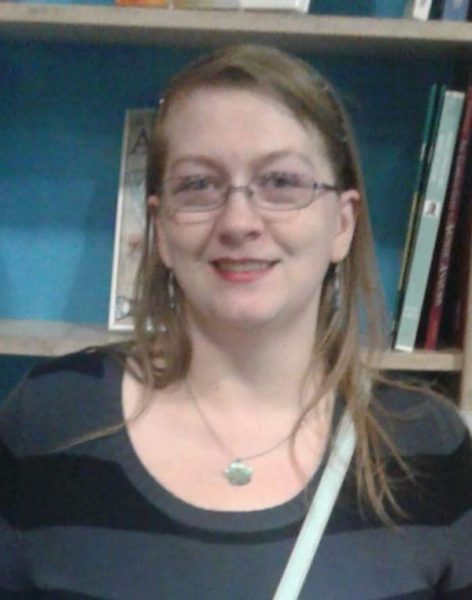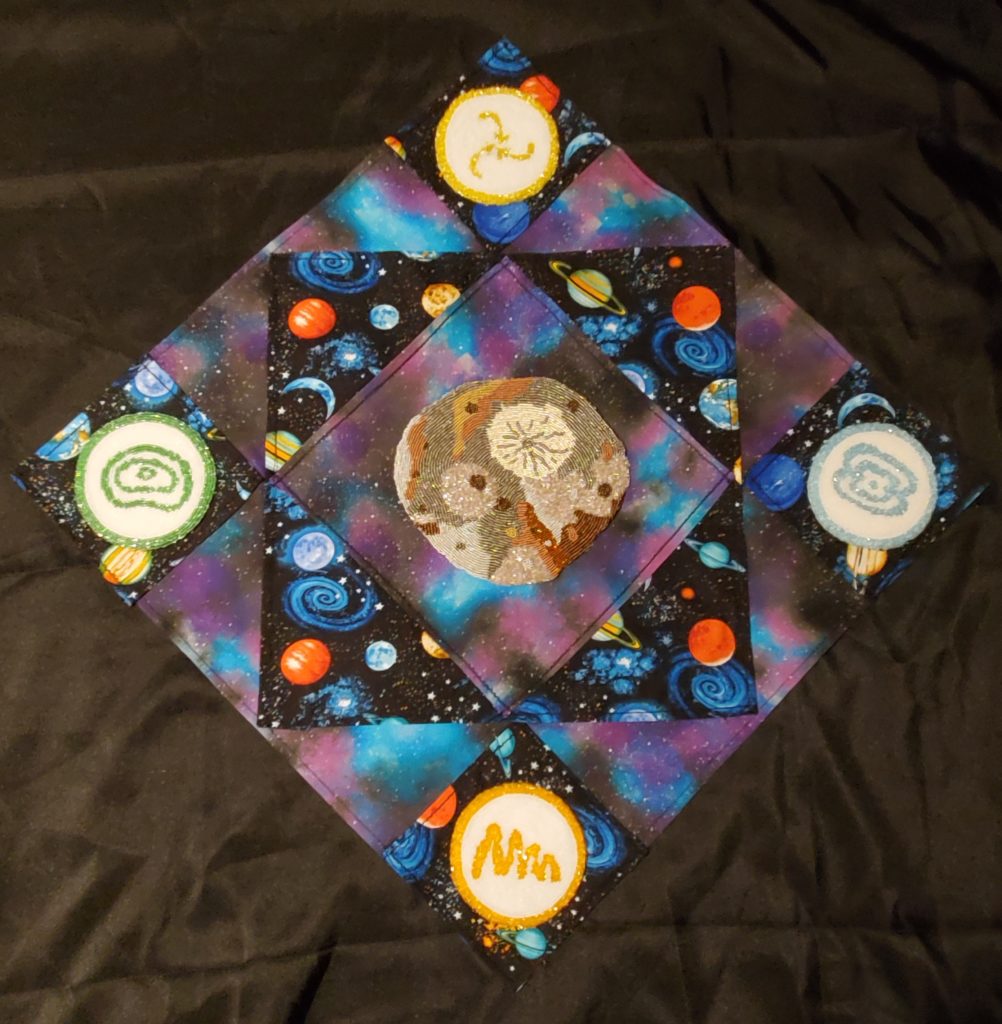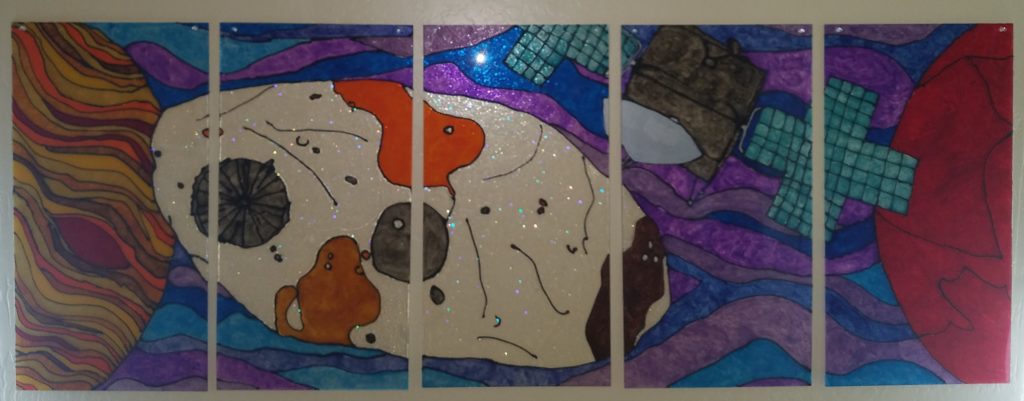Beaded Orbits
Shannon Hack
Major: Art studies
Genre/Medium: mixed media fabric and seed beads
About the work: Beaded Orbits is a mixed media piece measuring two feet by two feet inspired by the information gathered during each phase of orbit by Psyche orbiter. In each corner is one of four medallions representing the four phases of orbits with Psyche in the center of the piece. Each of these symbols and Psyche were hand beaded using seed beads and then attached to a quilt style backing. I chose to design the backing like a small quilt as representation of the dreams that exploring the universe encourage when we are open to all possibilities. All the beaded pieces are about 300 hours worth of combined work that for me, is a nod to all the many hours, days, and years that go into a single mission.




